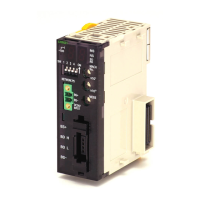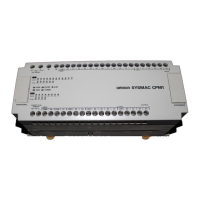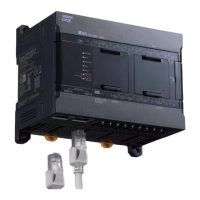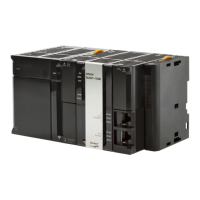1. Basic Understanding of Instructions
4
CS/CJ/NSJ Series Instructions Reference Manual (W474)
Note Operands are also called the first operand, second operand, and so on, start-
ing from the top of the instruction.
Instruction Location and Execution Conditions
The following table shows the possible locations for instructions. Instructions
are grouped into those that do and those do not require execution conditions.
Refer to SECTION 3 Instructions for details.
Operand types Operand
symbol
Description
Source Specifies the address of
the data to be read or a
constant.
S Source
Operand
Source operand
other than control
data (C)
C Control
data
Compound data in a
source operand that
has different mean-
ings depending bit
status.
Destination
(Results)
Specifies the address
where data will be writ-
ten.
D ---
Number Specifies a particular
number used in the
instruction, such as a
jump number or subrou-
tine number.
N ---
MOV
#0
D0
JMP
&3
Example
S (source)
D (destination)
N (number)
MOV
#0
D0
First operand
Second operand
Instruction Location Execution
condition
Diagram Examples
Input
instruc-
tions
Logical start
(Load
instructions)
Connected directly
to the left bus bar
or is at the begin-
ning of an instruc-
tion block.
Not
required.
LD, LD TST(350), LD > (and other sym-
bol comparison instructions)
Intermediate
instructions
Between a logical
start and the out-
put instruction.
Required AND, OR, AND TEST(350), AND >
(and other ADD symbol comparison
instructions), UP(521), DOWN(522),
NOT(520), etc.
Output instructions Connected directly
to the right bus
bar.
Required Most instructions including OUT and
MOV(021).
Not
required.
END(001), JME(005), FOR(512),
ILC(003), etc.
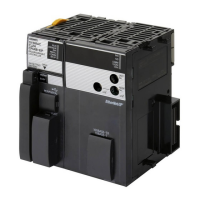
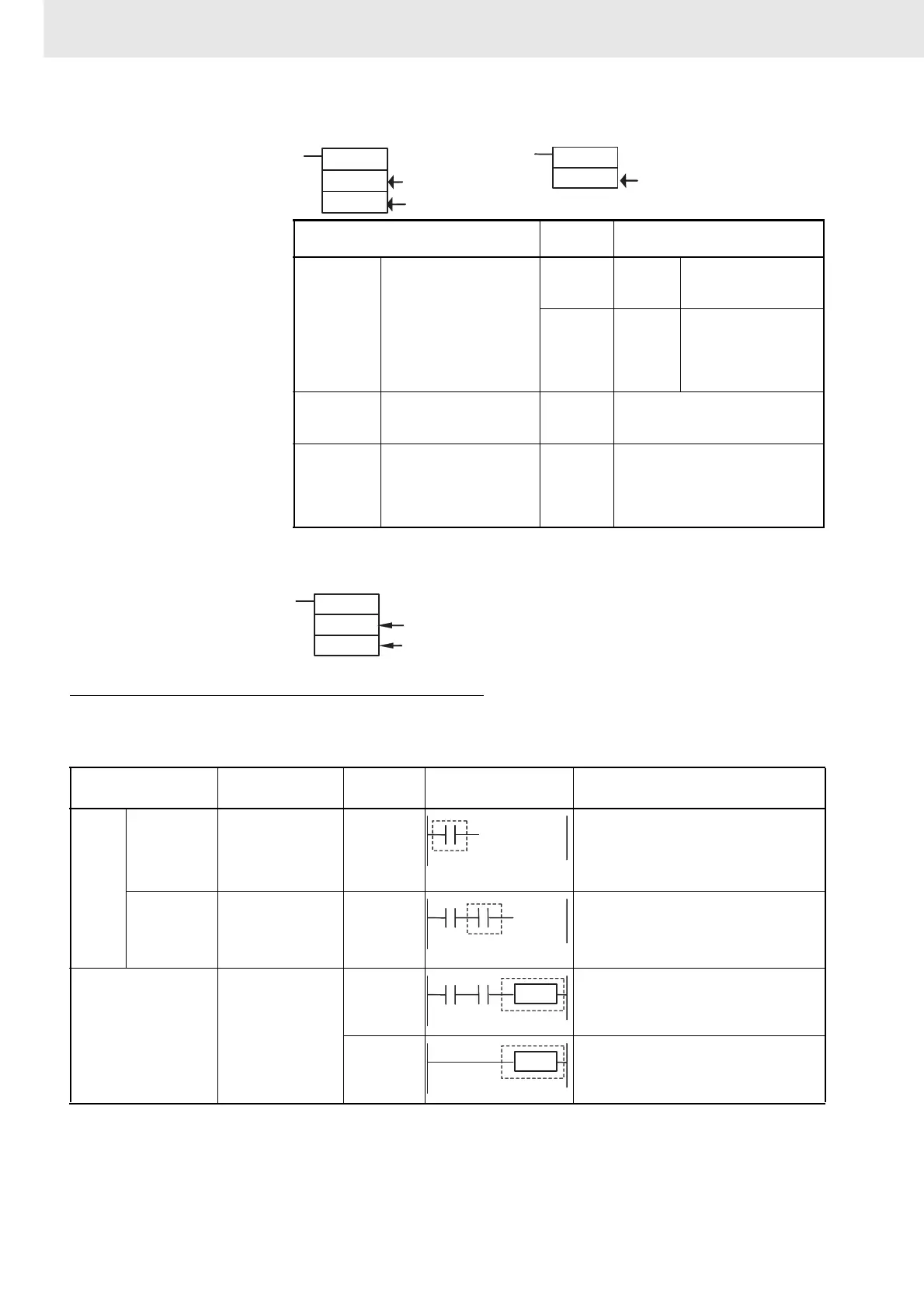